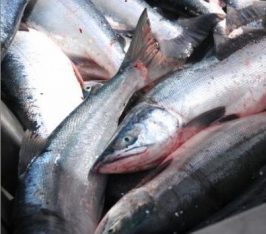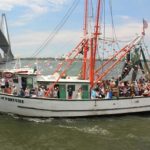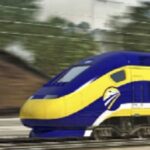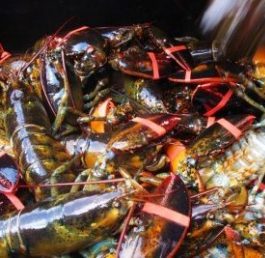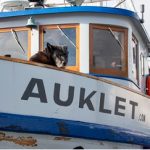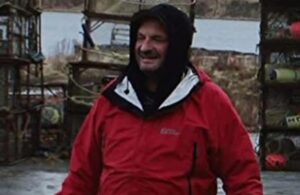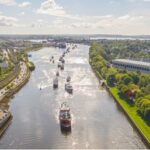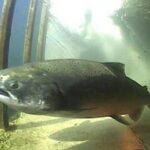Monthly Archives: July 2020

Hurricane Isaias Public Advisory
At 800 PM EDT (0000 UTC), the center of Hurricane Isaias was located by Air Force and NOAA Hurricane Hunter aircraft near latitude 22.9 North, longitude 75.9 West. Isaias is moving toward the northwest near 15 mph (24 km/h), and a general northwestward motion with some decrease in forward speed is expected for the next day or so, followed by a turn toward the north-northwest by late Sunday. On the forecast track, the center of Isaias will move near or over the Central Bahamas tonight, near or over the Northwestern Bahamas Saturday and near the east coast of the Florida peninsula Saturday afternoon through Sunday. >click to read< 20:31
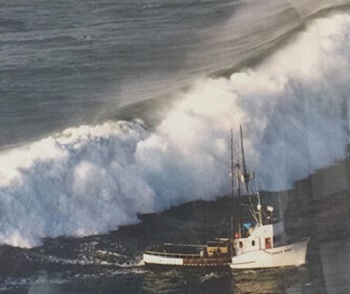
Highliner Glen Arthur ‘Art’ McCune Jr
February 1, 2020, at the young age of 90 years, Art passed away in Palm Springs, at Eisenhower Hospital, leaving his loving wife, Mary, children, grand children, and great grand children.,, Art learned of the commercial fishing industry in Crescent City. in the 40s. Later he returned in early 50s, going commercial crabbing out of Crescent City. He could be considered a pioneer in the commercial fishing industry always exploring new fishing grounds and made commercial fishing his lifetime career! Art fished salmon, albacore, and crab seasons. He also obtained a squid permit and did research for squid in southern waters for the fish and game. Art fished king crab in the Bering Sea in the early 60s. Art owned the fishing vessels, Falcon, We, Pacific Sea and Sally Kay. Art was known as a “highliner” among the fishermen and was respected by all who knew him. >click to read< 16:28
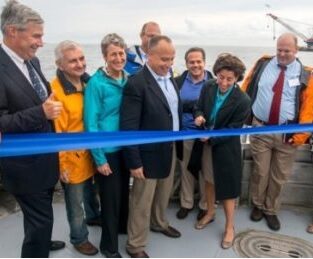
Still Love NY? NY’s Offshore Wind Obsession Means Vastly Higher Power Price
Offshore wind is the renewable-energy industry’s shiny new toy. Led by New York, seven Atlantic-coast states have now imposed mandates to expand offshore wind use over the next decade, with the Empire State last week soliciting bids for an additional 2,500 megawatts of offshore power, on top of the 1,700 megawatts procured previously. Advocates claim offshore wind will contribute to a low-carbon future, spur an economic renaissance, and create thousands of jobs. Don’t buy it. The mandates are yet another boondoggle that will benefit a well-connected few, saddling everyone else with even higher power costs. Consider Rhode Island’s 30-megawatt, six-turbine offshore wind project located off Block Island and operated by Deepwater Wind. >click to read< 14:34
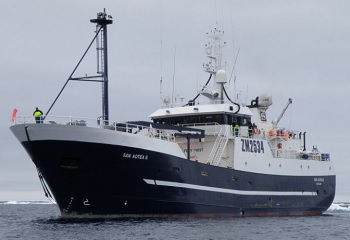
F/V San Aspiring crew back from Falklands ahead of schedule aboard F/V San Aotea II
The mission to retrieve 15 Kiwi fishermen from the South Atlantic Ocean is almost at an end, with the F/V San Aotea II anchoring off the coast of Timaru, in New Zealand’s southern island, a day ahead of schedule. According to reports in the NZ media, the long liner was expected to arrive in Timaru on August 1 after a 55-day round trip, but arrived on Friday morning, ahead of schedule thanks to unusually good weather in the South Pacific in the past week, Sanford spokesperson Fiona MacMillan said. >click to read< 13:10

CARES Act: California Fisheries Relief Funding Soon to be Available for Select Sectors Affected by Coronavirus
Coastal and marine fishery participants – including licensed commercial fishermen, fish buyers, aquaculture businesses, charter boat owners and guides – who have experienced a loss of income due to the effects of COVID-19 may be eligible for federal relief funding disbursed through the California Department of Fish and Wildlife (CDFW). The funding is part of the federal Coronavirus Aid, Relief and Economic Security (CARES) Act. This more than $2 trillion economic relief package provides direct economic assistance for American workers, families and small businesses that have been impacted COVID-19. About $18 million in CARES funding was earmarked specifically for fisheries assistance in California. >click to read< 12:07

“Aussie Lobster Men”: Tasmania’s Aussie Lobster Man!
Brendan “Squizzy” Taylor and the boys portray the real lives of a crew on board a commercial fishing vessel here in Tassie. Filming was originally due to finish back in March, but like most things the pandemic hit and filming was delayed. The pandemic has transformed the lobster industry dramatically, Squizzy revealed the price of lobster had dropped significantly in the past few months. “This has been the most stressful time of my life in the family business. The industry got turned on its head overnight” At the height of the COVID-19 pandemic, the only place he was able to sell lobsters was straight off the boat in Margate to locals. >click to read< 11:09
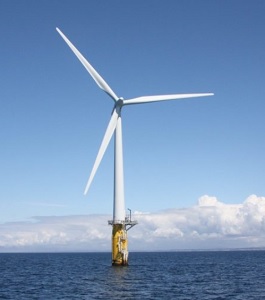
Reader has concerns about offshore wind turbines
There are two large wind-turbine projects proposed off our beaches. The lease area extends from the inlet at Ocean City north to Rehoboth. US Wind (an Italian company), according to their website, plans to install as many as 187 wind turbines. Orsted (a Danish company) plans to initially install 12 wind turbines that are 845 feet tall, with more likely coming after that., The wind tower components will be manufactured overseas since we lack the infrastructure to do so. They will be installed by experienced European crews. Instead of the many thousands of jobs US Wind and Orsted claim will be created, there will only be about 55 permanent jobs,,, by Geoffrey Pohanka >click to read< 10:17

What a life Stevie Robbins had
Inside an old trap shop on West Main Street down by the harbor, Stevie Robbins for many years played his guitar and sang on Sunday mornings, starting at 7 a.m. Anyone who wanted to could join him, and many did. ,, He was a highline fishermen, one of the first to fish off the Georges Banks. A master boat handler and lobster catcher, he was tough and strong and determined, said Brian in a phone interview. “He could walk across your living 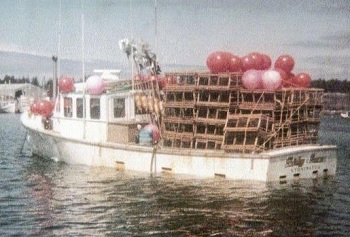 room floor and there’d be a lobster hanging off his pant-leg by the time he got to the other end,” he said. At first he fished inshore with Brian. Then the stories about the offshore fishermen, Bob Brown and Benny Beal, started to trickle down to the Robbins boys. In 1977, they set out for the offshore grounds in the 44’ Shirley and Freeman, named for his mother and grandfather. At first, they had little luck. What they did catch they sold to Clyde Conary. “We didn’t make Clyde any money,” said Brian. “He’d have a cigarette, and say, ‘I got faith in you boys.’” photo’s, >click to read< 08:25
room floor and there’d be a lobster hanging off his pant-leg by the time he got to the other end,” he said. At first he fished inshore with Brian. Then the stories about the offshore fishermen, Bob Brown and Benny Beal, started to trickle down to the Robbins boys. In 1977, they set out for the offshore grounds in the 44’ Shirley and Freeman, named for his mother and grandfather. At first, they had little luck. What they did catch they sold to Clyde Conary. “We didn’t make Clyde any money,” said Brian. “He’d have a cigarette, and say, ‘I got faith in you boys.’” photo’s, >click to read< 08:25
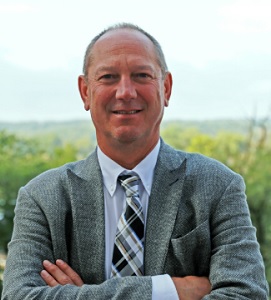
A message from Chris Oliver on National-Level Observer Waiver Criteria; Redeployment in Northeast To Begin
To improve transparency in our approach to observer deployment, we have established national-level criteria for vessels to be waived (released) from observer or at-sea monitor coverage. Going forward, observer or monitor coverage may be waived, for both full and partial-coverage fisheries, on a trip-specific basis if one of the following two criteria are met: (1) Observers or at-sea monitors are not available for deployment; or (2) The observer providers cannot meet the safety protocols imposed by a state on commercial fishing crew or by the vessel or vessel company on its crew. Within our limited authority, our efforts are intended to ensure observers and monitors are following the same safety protocols that fishermen are following. >click to read< 17:50
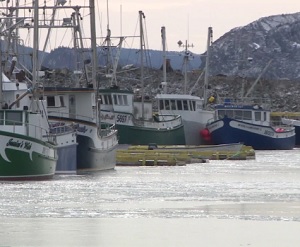
Shrimp fishery set to begin with financial loss – could be larger if boats stay at the wharf
Association of Seafood Producers president Derek Butler said the start of the fishery has been driven by a sense of responsibility among everyone that relies on the fishery to make a living. Butler said those involved in the fishery had time to decide whether or not they wanted to open, and understand this season will bring almost guaranteed financial loss. The Fish, Food and Allied Workers’ original price offer was $1.18 per pound, while processors countered with 70 cents per pound. In the end, a hearing settled on $1.08, but the ASP said that number still means losses for processors. However, Butler said the losses could be larger if boats don’t leave the wharf this season. >click to read< 16:52
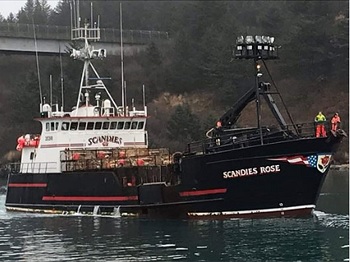
UPDATE: U.S. Coast Guard Marine Board of Investigation into loss of F/V Scandies Rose has postponed Pubic Hearing
The U.S. Coast Guard has postponed the public hearing, part of the larger investigation into circumstances surrounding the sinking of the commercial fishing vessel (F/V) Scandies Rose and the loss of five of its seven crewmembers. The hearing was scheduled to take place in Seattle September 8-18, 2020. The decision to delay the public hearing was made to protect the health of the investigative team, the witnesses, and families and to comply with federal and state travel restrictions to reduce the spread of COVID-19. “The public hearing is a critical part of the Marine Board of Investigation (MBI) process, one that requires transparency. Those affected by this tragedy have the right to attend in person and, if we can’t afford them that, we owe them an alternative means,” said Cmdr. Greg Callaghan, MBI Chair. >click to read< 13:57
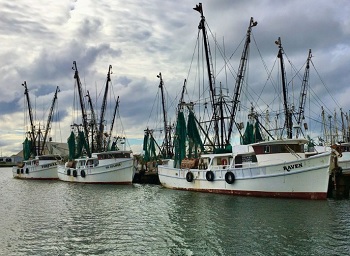
Florida fisheries wait for federal aid as prices take a deep dive – fisheries across the nation have experienced steep sales decline
Federal officials Wednesday defended the delay in releasing $300 million on fisheries assistance funding, including $23.4 million for Florida, saying the pandemic has set them behind in analyzing data to determine how much each fishery is due. Senators on the Commerce, Science, & Transportation Committee urged faster action to offset the impacts of COVID-19 on the seafood industry. Committee Chairman Sen. Roger Wicker, R-Miss., noted that fisheries across the nation have experienced up to a 90 percent decline in sales.,, In May, the CARES Act allocated $300 million for fisheries assistance funding. Florida received $23,447,815, according to the Atlantic States Marine Fisheries Commission. However, the National Oceanic and Atmospheric Administration has not approved the state’s plan. >click to read< 13:03
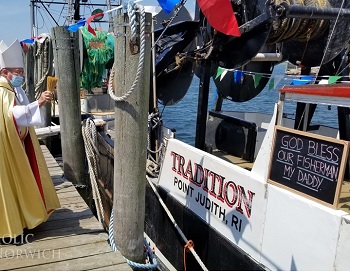
The Blessing of the Fleet in Stonington, Connecticut
The tradition of the annual Blessing of the Fleet in Stonington continued this year, albeit with a much smaller crowd and scaled-back ceremonies. The blessing remembers local fishermen who have died at sea and honors the vessels — along with their captains, owners, crews and families — that will go out to sea in the year ahead. The gathering took place July 26 after a Fishermen’s Mass in St. Mary Church in Stonington Borough. >click to read<, and >click here for a photo gallery< 11:28
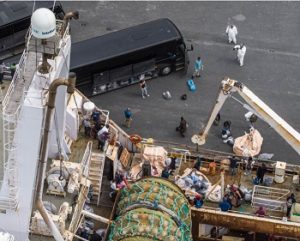
Trump admin Coronavirus task force urges Alaska to require masks for seafood plants and hot spots
The state should mandate masks, especially in seafood processing plants and places with high or rising case counts, to slow Alaska’s explosive coronavirus infection rates. That’s the recommendation of a July 26 report distributed to states by the Trump administration’s coronavirus task force,,, The update summarized the state’s largest COVID-19 outbreaks to date. The top four involve the seafood industry and together involve more than 350 people: 139 out of about 252 workers at the OBI Seafoods plant in Seward; 85 out of about 119 workers on the factory trawler American Triumph; 76 workers out of about 135 at the Copper River Seafoods plant in Anchorage; and 62 out of about 150 at the Alaska Glacier Seafoods plant in Juneau. >click to read< 09:49
Bristol Bay Fisheries Report: July 29, 2020
In the penultimate episode of the season, we take a look at the beating heart of our show — commercial fishing. We parse through updates on federal and state relief funding for fishermen, perspectives on the Naknek-Kvichak’s huge year, and a final look at the market. >click to read< 08:11
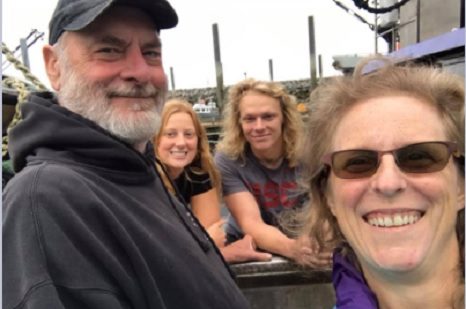
A Fundraiser: Memorial Expenses for Sig and Helen Decker
On July 28, Julie and Gig Decker learned that they lost both their children, Helen and Sig Decker in a car accident in Petersburg, Alaska. Helen was 19 and Sig was 21. Although both were born and raised in Wrangell, Helen and Sig were in Petersburg fishing side-by-side for the summer to help pay for college. This unimaginable loss comes during an already challenging time. The initial $10,000 in funds raised will go towards funeral costs and related expenses. We are looking to raise $50,000 to fund the rest of the brand new Wrangell Mariner’s Memorial where Helen and Sig will be the first names on the wall. Additional funds raised after that will be used to start a Memorial Scholarship Fund,,, >click to read, and, please donate if you can<21:17
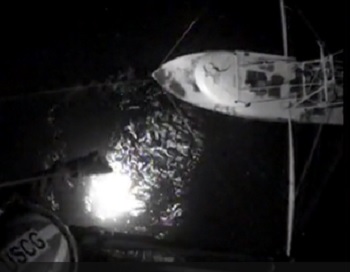
Coast Guard assists a 77-foot fishing vessel taking on water
The Coast Guard assisted a 77-foot fishing vessel taking on water near Freshwater Bayou, Louisiana, Wednesday. Sector/Air Station Houston-Galveston watchstanders received a report of a 77-foot fishing vessel with three fisHermen, aboard taking on water. Watchstanders issued an urgent marine information broadcast and launched a Coast Guard Air Station Houston MH-65 Dolphin helicopter aircrew and a Station Sabine Response Boat-Medium boat crew to the scene. Once on scene, the Air Station Houston helicopter crew lowered a rescue swimmer and a dewatering pump to the vessel, F/V Capt. Cardin. The source of the flooding was secured and the vessel was dewatered. Video, >click to read< 17:12

1 dead, 1 found alive after fishing vessel goes missing near Gros Morne
One man is dead, while another has been found alive in the waters off Sally’s Cove, after a fishing boat was due back the day before, the Canadian Coast Guard confirmed in a statement Wednesday afternoon. The coast guard said a man was rescued from the water at about 10:30 Wednesday morning. Shortly after, the second man was located, but he was found unresponsive. The men were commercial fish harvesters, and they were expected to return to their home community of Sally’s Cove by 2 p.m. Tuesday. The Bonne Bay RCMP said they received a report Tuesday at 10 p.m. that the 21-foot open-boat fishing vessel was overdue. Search and rescue personnel organized immediately and a mayday alert was sent. >click to read< 16:24
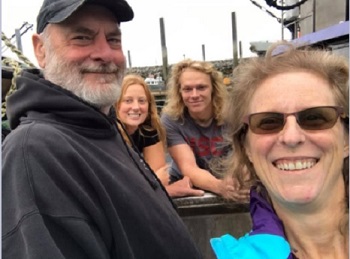
Memorial Fund for Helen and Sig Decker organized and facilitated by United Fishermen of Alaska
Yesterday the unimaginable happened. Julie and Gig Decker learned that they lost both their children, Helen and Sig Decker in a car accident in Petersburg, Alaska. Helen was 19 and Sig was 21. Although both were born and raised in Wrangell, Helen and Sig were in Petersburg fishing side-by-side for the summer to help pay for college. We are asking for an outpouring of support, and have set up a memorial fund organized and facilitated by United Fishermen of Alaska. >click to read< You can find the GoFundMe organized by UFA >here< 14:20
This is the unimaginable – Four dead in vehicle wreck south of Petersburg – it is linked here for a few reasons. The tragedy that has shocked so many is described, and mentions two other victims in this horrible turn of events. They are identified as Ian Martin, 29 of Petersburg and Dennis Lord, 37 of Elmira Heights, New York. Bob Thorstenson Jr. manages two seiners, F/V Magnus Martens and F/V Vigilant, says the crew had come into Petersburg to meet a marine mechanic after one of their vessels had engine trouble. “Otherwise we wouldn’t have been on this island with this godforsaken highway, you know,” >click to read<
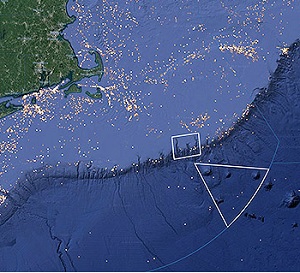
Northeast Canyons and Seamounts Marine National Monument showdown reaches high court
The Obama administration exceeded its authority in 2016 when it designated the Northeast Canyons and Seamounts Marine National Monument and cut off access to key fisheries, attorneys for the Massachusetts Lobstermen’s Association and other groups argued in their petition filed with the Supreme Court yesterday. A recent move by the Trump administration to preserve the monument but dissolve fishing restrictions has not erased the need for the high court to consider the case, the groups wrote. Those rollbacks are now subject to a separate lawsuit launched by environmental groups. >click to read< 12:28
Athearn Marine Agency Boat of the Week: 57′ Fiberglass Scalloper, 3408 Cat, Limited Access Part Time Scallop Permit
 To review specifications, information and 10 photos, >click here< To see all the boats in this series, >click here<11:31
To review specifications, information and 10 photos, >click here< To see all the boats in this series, >click here<11:31
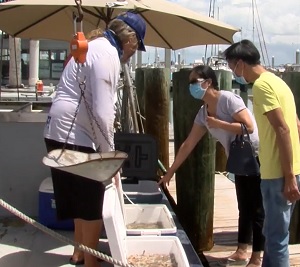
Despite the Coronavirus pandemic, bait shrimping business is good
Over the past few years, the shrimping business has been struggling. Even the number of boats licensed to catch bait shrimp in Texas bays has dropped. There are currently only about 300 boats licensed to catch bait shrimp in Texas bay waters compared to 2,378 in 1988. Just days after Hurricane Hanna slammed into the Coastal Bend, those few bait shrimping boats were back at work to meet the public demand. “They have been selling as fast as we can get them. It is gone. We are steady every day; every day we need 200 pounds every day,”, video, >click to read< 09:22
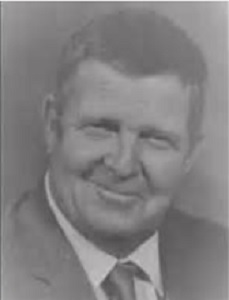
Clifford Cooper, an early pioneer of the shrimping industry in Aransas Pass
Clifford Boyd Cooper (84) passed away on Saturday, July 25, 2020 at his home peacefully with his family at his side. He was born on November 16, 1935 to Oliver Claude and Daisy Marie Cooper in Bay City, Texas. Clifford was an early pioneer of the shrimping industry in Aransas Pass. He also shrimped off the coast of Africa and South America. He loved the open sea and filling his nets with shrimp from our beautiful Gulf of Mexico. He even taught net weaving to interested young men at Del Mar Tech College to help spur the shrimping industry. Later in life he worked for Gulf King Marine as maintenance/mechanic for their fleet of shrimp boats. >click to read< 08:31
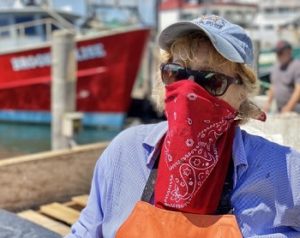
On the fishing docks of Point Judith: Sales are down, but they still work hard in the heat
She was surrounded by 450-pound barrels of the bottom fish, brought in by draggers. Despite wholesale lobster prices being down from the pandemic, boats are still going out to scratch out a paycheck. It’s all they have. Andrea was wearing orange oilers and rubber boots in the sun, driving a huge needle through four frisbee-size skates at a time to make a “string.” The bait not only lures lobsters but is good eating for them during the days they’re in traps before being hauled. Andrea joked that her skates are what makes lobsters taste good. I asked how old she is. She smiled and said, “None of your business,” then allowed she might be in her mid-60s. She’s a longtime fixture on the docks, having started “The Bait Company” there 36 years ago to serve the big boats that go out to sea. photos, >click to read< 22:15
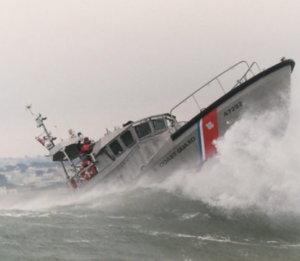
Coast Guard rescues fisherman as commercial fishing vessel sinks near Columbia River entrance
The Coast Guard rescued a fisherman from the water Tuesday morning after his vessel began taking on water and sank near the Cape Disappointment bar. At 1:30 a.m., watchstanders at Coast Guard Sector Columbia River received a VHF-FM radio mayday call from a man aboard a 37-foot commercial fishing vessel taking on water near Cape Disappointment, identified as the Fishing Vessel F/V Brejoh. A Coast Guard Station Cape Disappointment 47-foot Motor Lifeboat crew and a Sector Columbia River MH-60 Jayhawk helicopter crew responded. >click to read< 20:14:
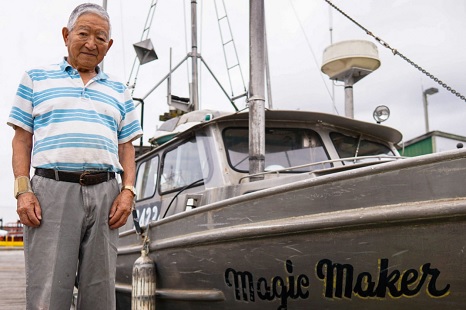
Three generations of the Hamada family have fished British Columbia’s coast. Will the latest outlive the salmon they seek?
The Hamadas tell me this story on a November night in 2019 in their one-story home built by Satoshi, tucked away in the heart of Richmond, a city that borders Vancouver. They moved into the house five months after Dereck was born. Huddled around a kitchen table better suited for two people, Satoshi, Dereck, June, and I peer over fishing catch receipts, dated newspaper clippings, and black-and-white photographs scattered across the tabletop, illuminated by bright-white kitchen lights overhead. Our conversation was supposed to have happened at sea aboard the Three generations, the family boat built by Satoshi in 1967. Dereck and Satoshi had invited me to join them on a chum fishing trip to mark Satoshi’s 66 years of fishing on the BC coast. Instead, we have gathered indoors, to look back on 2019, the year that everything changed. >click to read< 10:34

Fighting for Fish – The Cod Wars and Today: Lessons from an Almost War
Not once, but three times in the 20th Century, cod was almost the causus belli between Iceland and the United Kingdom in a string of events referred to collectively as the “Cod Wars.”1 The Cod Wars, taken together, make clear that issues of maritime governance and access to maritime resources can spark inter-state conflict even among allied nations. Fishing rights can be core issues that maritime states will vigorously defend. The First Cod War started on September 1st, 1958. Icelandic coastguardsmen sought to arrest and impound any British trawlers within their new 12-mile limit. >click to read< 09:59
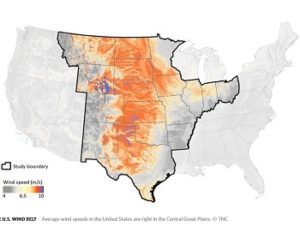
The U.S. “wind belt” – Map Shows ‘Low-Impact’ Locations for Wind Power
Wind energy developers both onshore and offshore face numerous challenges. Concerns about noise from wind turbines, disruption of visual aesthetics, and danger to wildlife have led to the cancellation or delay of several projects in recent years. The group’s analysis focused on finding land with high wind energy potential, but where impacts would be low to wildlife and the surrounding land. The Nature Conservancy partnered with organizations in each of the 17 states it studied, and gathered more than 100 data sets from conservation and land use organizations as well as state agencies. The group said more than 60 scientists worked to develop the siting map, with an eye toward helping developers avoid unsuitable sites. >click to read< 09:16








